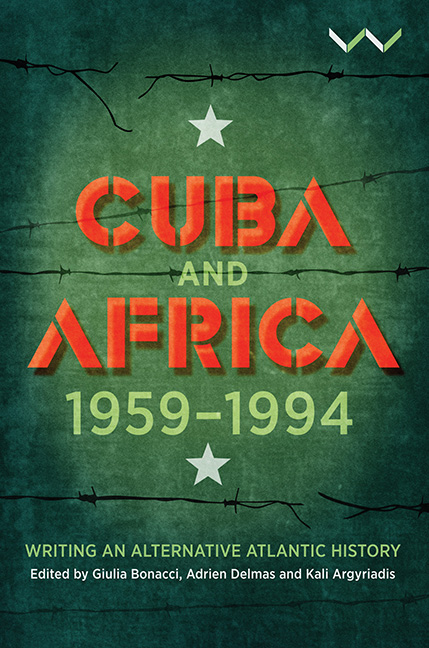Book contents
- Frontmatter
- Contents
- Figures and Table
- Foreword
- Acknowledgements
- Acronyms and Abbreviations
- Timeline of Historical Events
- Map of Africa, 1994
- Introduction Reconfiguring the Cuba–Africa Encounter
- Part I Politics and Solidarity
- Part II Trajectories
- Part III Voices
- Part IV Reconstructing History, Reconnecting Roots
- Contributors
- Index
Chapter 9 - The Construction of a Spiritual Filiation from Havana to Ile-Ife
Published online by Cambridge University Press: 15 June 2021
- Frontmatter
- Contents
- Figures and Table
- Foreword
- Acknowledgements
- Acronyms and Abbreviations
- Timeline of Historical Events
- Map of Africa, 1994
- Introduction Reconfiguring the Cuba–Africa Encounter
- Part I Politics and Solidarity
- Part II Trajectories
- Part III Voices
- Part IV Reconstructing History, Reconnecting Roots
- Contributors
- Index
Summary
‘I have always cared about Nigeria because it was our Motherland.’
— Rodolfo Sarracino, interview, 25 February 2016Cuba was the second-last country in America to abolish slavery for good in 1886. The actual slave trade had continued until at least 1873, the year of the last-known arrival of a clandestine slave ship on the island. It was long accepted that this date also marked the end of all direct links between Cuba and the African continent. However, the oral history of several ritual lineages of santeros/santeras, babalaos and omó añá – Cuban practitioners of religions of Yoruba origin – collected and published at the end of the 1930s by the Cuban anthropologist Fernando Ortiz, or compiled in the manuals and handbooks written during the same period by the practitioners themselves, attested to some instances of initiated ancestors who had arrived at the end of the nineteenth century, or had gone to and then come back from Yorubaland. It was not until the end of the 1980s that these stories were clarified or corroborated in Cuba thanks to research by historians and anthropologists.
When Fernando Ortiz published his first book on the ‘witchcraft’ practised by Africans and their descendants in Cuba, he drew extensively on the work of the Brazilian anthropologist Raimundo Nina Rodrigues. Like Nina Rodrigues, Ortiz was influenced by the racist ideas of the time, which considered Yoruba culture to be one of the ‘most civilised in Africa’, and by the dictionaries produced by missionaries in Nigeria who were part of the Lagos cultural renaissance movement involved in the construction of identity and the standardisation of the ‘Yoruba’ language in the nineteenth century. This led Ortiz to search for traces of this culture on the island, but it was not until 1916 that he formally identified the culture, using the generic ethnonym of the time: Lucumí. From the 1920s onwards, against a background of protest against United States interference and a vogue for primitivism and Art Nègre, the thinking of this key Cuban writer took a radically different turn. He joined the artistic and social AfroCubanismo movement and paved the way for a revision of the history of the ‘coloured’ population, highlighting its specific forms of political organisation and the wealth of its religious and artistic expression.
- Type
- Chapter
- Information
- Cuba and Africa, 1959-1994Writing an Alternative Atlantic History, pp. 207 - 232Publisher: Wits University PressPrint publication year: 2020



